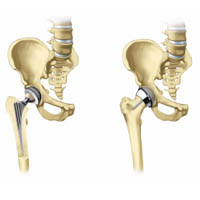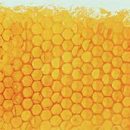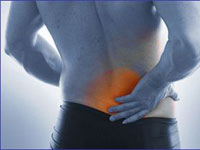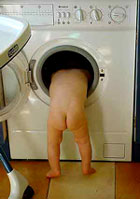Operation on the installation of artificial joint is carried out in order to restore movements in the joints. During the operation, the struck joint is replaced by artificial design. Today, endoprosthetics of joints is frequent operations in orthopedics, so the risk of developing complications is minimized.
Content
Indications for endoprosthetics
The solution in favor of the operation on the endoprosthetics of the joint is mainly lying on the patient. In many cases, severe pain and reception of a huge number of analgesics (painkillers) make a person's life so unbearable that the operation becomes vital. The exact time of operation must be discussed with all the necessary factors and features.
It is necessary to properly prepare for implantation of the endoprosthesis. During the preoperative period, it is necessary to improve the state of its own health, for example, by refusing smoking or reduce its own weight. Sanitation of the oral cavity and other possible foci of chronic infection. Such preliminary preparation will reduce the risk that accompanies any surgical intervention.
During the operation on total endoprosthetics of the joints, there is always a certain loss of some blood. This may cause it to transfusion. In order to prevent immunological conflict or infection, it is advisable to prepare your own blood for transfusion during surgery.
Installation Operation Artificial Sustain
 The purpose of the Endoprosthetics operation is to establish endoprosthesis, get freedom from pain and restore ability to work. Operation on endoprosthetics of the joint can be under common, combined or regional anesthesia (anesthesia). Regional anesthesia of the lower limb affects the general condition to a lesser extent and thereby it is preferable. In addition to anesthesia, a sedative (soothing) means will be introduced. During the operation, the patient will not experience any pain.
The purpose of the Endoprosthetics operation is to establish endoprosthesis, get freedom from pain and restore ability to work. Operation on endoprosthetics of the joint can be under common, combined or regional anesthesia (anesthesia). Regional anesthesia of the lower limb affects the general condition to a lesser extent and thereby it is preferable. In addition to anesthesia, a sedative (soothing) means will be introduced. During the operation, the patient will not experience any pain.
During the operation, the struck joint will be removed and replaced by artificial. Implantation will require a cut on the skin of about 20 cm long. Thus, the surgeon will be able to approach the joint, remove the struck joint and replace it with an artificial design.
After installation, the artificial joint is checked for mobility, and then sewing operating wounds. Drainage introduced into the wound prevents accumulation of leakage blood. After the operation, the pressing bandage (bandage) is superimposed and the first control radiography is performed. All operation usually takes about 1.5-2 hours.
Complications after endoprosthetics
Hematoma (bruises) can manifest after surgery and, as a rule, pass in a few days. Previously mentioned drainages are established to prevent large hemorrhages, t.E. for blood evacuation.
The thrombosis (blood clots formation) can cause increased blood coagulation (blood clots may prevent the stream of blood in the veins of the limbs), which can lead to a pulmonary embolism (when the blood clots reaches the lungs). Special preparations are prescribed to reduce the risk of thrombosis, in the form of tablets or injections, before and after surgery, as well as elastic stockings and tight bistening of the leg and foot, therapeutic physical education.
Infection in the field of operating wound - a rather rare complication, and is usually successfully treated with antibiotics. However, deep infection can lead to the loss of endoprosthesis and the need for re-operation. For this reason, special attention is paid sterility and protection from bacteria. Antibiotics are prescribed to this before and after the operation.
Dislocation (displacement) and dislocation of artificial joint occur quite rarely (mainly in the early postoperative period, until soft tissues healed) and are usually found only in cases of emergency motor activity or drops. As a rule, in this case, the doctor manages a displaced endoprosthesis under anesthesia.
In very rare cases, the development of tissue allergic reactions may be the development of contact with artificial joint. This reaction may be caused by chromo - nickel allergies. When using modern alloys available today, the risk of allergies is reduced to a minimum.
When implantation of endoprosthesis, bone cement is used to fix artificial joint. This may be accompanied by circulatory disorders (T.E. Nutrition in the surrounding tissues). But since most endoprosthetics of the joint can not do without cement, the greatest emphasis was aimed at developing cement that does not cause disorders.









